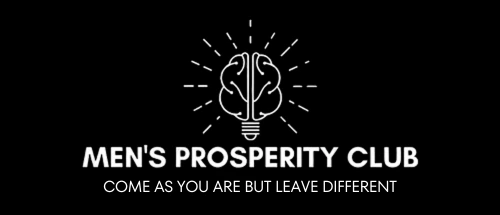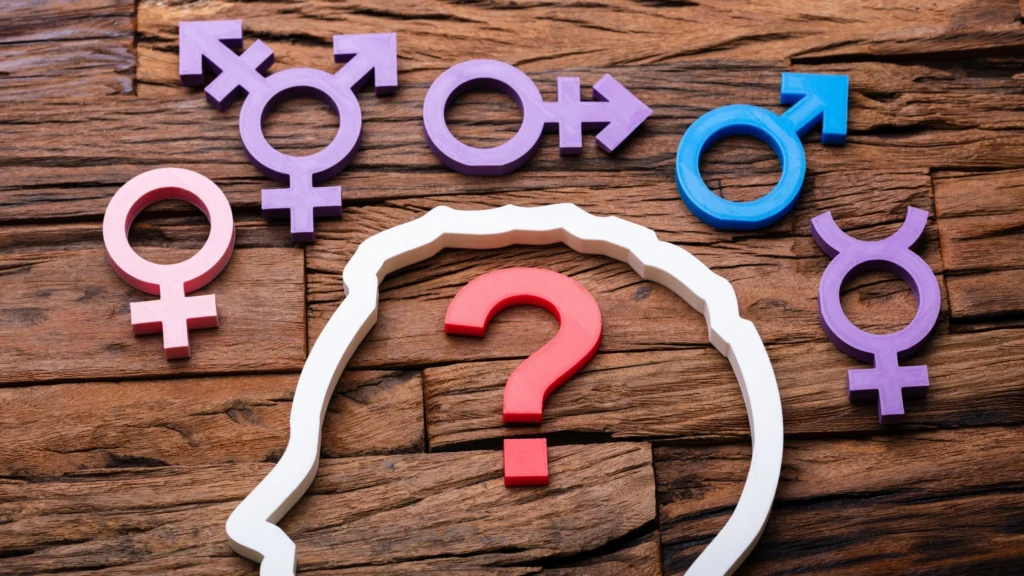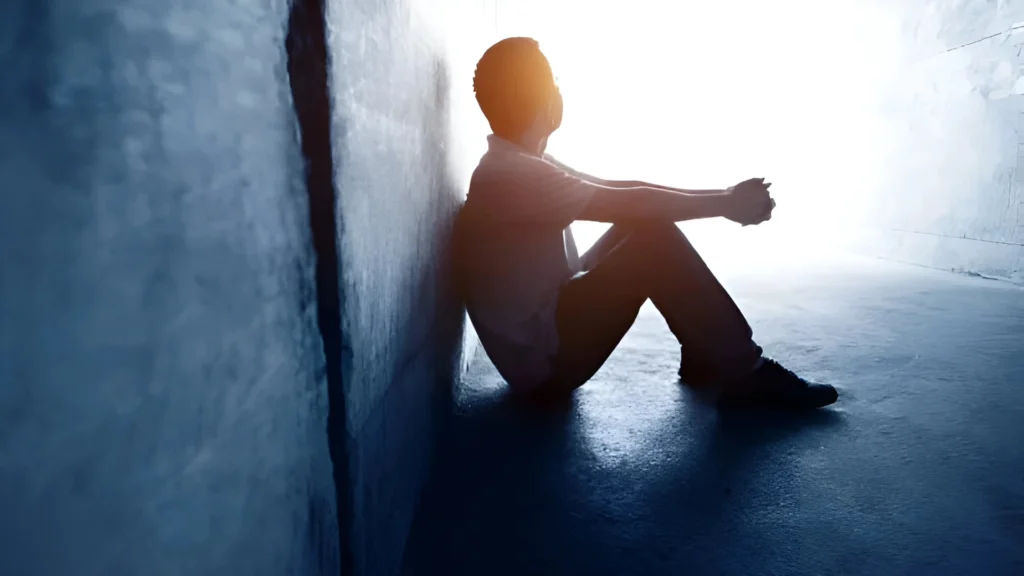Men are two to four times more likely to die by suicide than women worldwide. This sobering fact shows how gender norms affect mental health. Society expects men to stay strong, competitive and hide their vulnerabilities.
Men who follow traditional gender roles often don’t ask for help. These roles tell them to be self-reliant and control their emotions. This creates roadblocks to their mental well-being. Mental health professionals say their male patients see emotional discussions as a weakness. Many men avoid treatment until their conditions get worse.
This piece shows how gender expectations shape men’s mental health. It covers their journey from childhood development to workplace pressures. You’ll find out how masculine ideals connect with psychological well-being and learn trailblazing ways to build healthier approaches to masculinity.
Understanding Gender Norms in Society
Society shapes unwritten rules about how men and women should act in different situations. These beliefs run deep and guide our choices about careers, emotions, and daily life.
Kids learn these ‘rules’ early through gender socialisation. They pick up these lessons from four main sources:
- Family life and parents’ guidance
- Schools and teachers
- Friends and social groups
- Media and cultural messages
These norms have become part of our institutions, such as job markets and legal systems. This creates a web of expectations that people find hard to question or direct.
American history shows how male ideals have changed a lot. Colonial America saw men as family and community providers. Yes, society indeed viewed men as naturally virtuous beings with better logic and emotional control. The idea of manhood later changed to value independence, competition, and keeping emotions in check.
Different cultures show us varied ways of thinking about gender. To name just one example, New Guinea’s Arapesh people have both men and women share childcare duties equally and work together. Some cultures go beyond two genders. Hawaiian māhū hold special places in their communities.
These norms affect people differently based on their wealth, ethnicity, and cultural background. Studies show that gender rules can change as societies grow, but this takes time and effort. People often resist these changes, which shows why mental health faces such complex gender-related challenges.
Cultures that handle masculine ideals differently teach us valuable lessons about mental health. Societies with flexible gender roles often help people express emotions and seek help more easily. Strict gender rules can stop people from getting the mental health support they need.

The Construction of Traditional Masculinity
Men’s behaviours and attitudes develop through complex social processes that shape traditional masculinity from an early age. Research shows that public support for traditional gender divisions reached nearly 50% in the mid-1980s. This number has dropped to just 13% over the last several years.
Defining traditional gender roles
Men face core expectations in society that are the foundations of traditional masculine norms. These include:
- Being the main breadwinner and financial provider
- Showing physical strength and emotional stoicism
- You retain control and dominance in relationships
- Staying away from behaviours others see as feminine
These expectations create intense pressure that affects men’s sense of self-worth and mental well-being. Traditional roles remain deeply embedded in workplace cultures, especially when you have male-dominated sectors where people discourage any display of weakness.
Socialisation processes in childhood
Children start developing their sense of gender as early as 2-3 years old, which shapes their masculine identity. During these formative years, boys learn masculine behaviours through different channels. Family interactions and peer relationships play the biggest role in this learning process.
Research shows that young males face conflicting pressures as they grow up. Traditional expectations push them toward toughness and strength, while modern society wants emotional intelligence and sensitivity. Young men struggle with these opposing forces, especially during their teenage years.
Media influence on masculine ideals
Media powerfully reinforces traditional masculine ideals. People who frequently watch television, play video games, and use YouTube tend to support masculine views that value emotional detachment and dominance. TV shows consistently present men as serious, confident, and powerful characters but rarely show them nurturing others or handling domestic duties.
Evidence suggests that social media has intensified these pressures. Young men feel constant pressure to maintain a “hard man” image online. This endless performance of masculinity becomes challenging for those who lack the means or desire to fit these ideals.
Mental Health Impact of Gender Social Norms
Men’s emotions are just as strong as women’s. Society’s expectations force them to hide these feelings, which creates serious mental health challenges. Research shows this psychological burden of following traditional gender roles shows up in complex ways among men.
Emotional suppression and psychological stress
Men face constant pressure to stay emotionally in control, which creates worrying patterns of mental strain. Those who closely follow masculine norms often push their feelings down. This behaviour increases their stress and anxiety levels. Mental health experts call this “masculine discrepancy stress” – the extra pressure men feel to meet gender expectations.
Substance abuse and risk-taking behaviours
Traditional masculine norms and substance abuse share a troubling connection. Men tend to use almost all types of illicit drugs more frequently than women. They often turn to alcohol and drugs to deal with depression and negative emotions. This becomes their way of coping.
Risk-taking shows up in several ways:
- Dangerous physical activities
- Heavy drinking
- Using drugs to self-medicate
- Violent or aggressive behaviour

Depression and anxiety manifestations
Men’s depression looks different from typical symptoms. This makes it more difficult to identify and treat. Key signs specific to men include:
- Quick anger and irritability
- Problems with drugs or alcohol
- Violent or controlling actions
- Escaping through overwork
- Physical problems like headaches and stomach issues
These signs often go unnoticed because they don’t match typical depression symptoms. Men tend to focus more on physical symptoms when depressed. Healthcare providers find it hard to spot the mental health issues behind these physical complaints.
Men who strictly follow traditional masculine norms rarely ask for professional help. Their unwillingness to seek support and tendency to hide symptoms creates a dangerous cycle. Mental health issues stay untreated until they reach crisis level.
Economic and Social Consequences
Gender norms cost the UK economy £127.9 billion every year – that’s almost 5% of the nation’s GDP [28, 29]. These deeply rooted expectations affect society well beyond individual mental health challenges.
Workplace performance and career pressure
Gender stereotyping creates unique challenges for men in professional settings. Men who take on traditionally female-typed roles often face career setbacks. These setbacks show up as:
- Others see them as less competent
- Team members follow their instructions less often
- They struggle to retain control in leadership roles
- Their work faces extra scrutiny
Healthcare costs and productivity loss
Mental health challenges tied to gender norms bring heavy financial consequences. The UK’s mental health services budget grew from £11.6 billion to £15.9 billion between 2016/17 and 2022/23. In spite of that, this spending makes up just 0.7% of the country’s GDP.
The actual cost breakdown shows a troubling pattern:
- Lost productivity accounts for 72% of all costs
- Working-age men need more expensive treatments
- Healthcare costs peak during the first year after diagnosis

Effect on relationships and family dynamics
Gender norms disrupt personal relationships and family structures too. Research shows that couples who don’t follow common gender norms face more social pressure and stigma. This pressure becomes clear when:
A man’s unemployment status strongly affects relationship stability. The risk of separation jumps by 32% in communities with strict male-breadwinner expectations. These 50-year-old social norms still shape family dynamics and create tension between modern relationship needs.
Households with two working partners face extra challenges. Women with traditional views often do much more housework. The numbers tell the story – 79% of women handle daily cooking and housework, while only 34% of men share these tasks.
Intersectionality and Gender Expectations
The relationship between gender expectations and mental health shows how social identities connect with masculine norms. Men’s experiences with gender expectations change based on their racial, cultural, and socioeconomic backgrounds. Research backs this up.
Race and cultural influences
Each community has its way of understanding and enforcing masculine ideals. Black parents say society puts limits on their men’s emotional expression and involvement in raising children. White men have more freedom to express emotions and take on caregiving roles.
Different groups show these cultural patterns:
- Black fathers deal with extra pressure from racial discrimination
- Latino communities are moving toward more balanced gender roles
- Rural men stick to traditional attitudes more than city dwellers
- Cultural values shape how each group defines success
Socioeconomic factors
Money and social status affect how men live with and show gender norms. Students from wealthy backgrounds often measure success through both personal growth and career achievements. People from less privileged backgrounds usually focus on financial security as their main measure of success.
Sexual orientation and gender expression
LGBTQ+ individuals face unique challenges with gender expectations. Research shows GBT2Q people who feel forced to follow masculine norms have higher rates of:
- Depression and anxiety
- Poor self-reported mental health
- Discrimination
People whose gender expression is different from society’s norms deal with more anxiety and depression because of extra stress. This pressure hits harder for people who are:
- Gender fluid or androgynous
- Under 30 years old
- From ethnoracial minority groups
- Living with disabilities
Gender expectations keep changing in the digital world. Studies show many regions worldwide have moved away from traditional gender role stereotypes in the last five decades. Strict gender norms still affect mental health in social groups of all types, even with these slow changes.

Changing Gender Norms Through Policy
Policy changes are completely changing how organisations deal with men’s mental health challenges. The NHS has launched complete programmes to develop mental health services with communities. We focused on male-specific needs.
Workplace mental health initiatives
Today’s workplace policies show a better understanding of men’s unique mental health needs. The NHS plans to give 900,000 more people access to social prescribing by 2023/24. This expansion has:
- Exercise programmes
- Walking groups
- Community gardening initiatives
- Peer support networks
Educational system reforms
Schools are making vital changes to support boys’ emotional well-being. The system must teach boys how to understand their emotional health needs in school and as they grow into adults.
| Traditional Approach | Reformed Approach |
| Focus on academic achievement | Balanced emotional-academic development |
| Limited mental health discussion | Open dialogue about feelings |
| Generic support systems | Gender-specific emotional support |
| Crisis-only intervention | Preventive emotional education |
Healthcare policy adaptations
Healthcare policies are changing to serve men’s mental health needs better. Research shows men are now almost three times more likely to seek therapy when worried, compared to 2009. Past approaches didn’t deal very well with male-specific needs.
Key policy recommendations include:
- Establishing national and local targets to reduce suicide
- Appointing a dedicated Government Minister for men’s health
- Creating male-specific mental health programmes
- Developing community-based support structures
The Rugby League Cares Offload programme and Andy’s Man Club show these policy changes work. These programmes want to make men’s health a vital concern and bring experts from all disciplines to create lasting change.

Creating Supportive Communities
Men need supportive communities as lifelines while dealing with mental health challenges. Data shows men have fewer people to lean on during tough times, which makes community support vital to their well-being.
Peer support initiatives
The Men’s Prosperity Club Walk & Talk Event provides a unique opportunity for men to connect through meaningful conversations and shared physical activity. This initiative creates a relaxed and supportive environment where participants can discuss life’s challenges, share experiences, and build strong connections while enjoying the benefits of staying active.
As part of the club’s commitment to fostering a judgement-free community, the Walk & Talk Event encourages openness and camaraderie among its members. It exemplifies the club’s mission to promote mental and physical well-being for men of all backgrounds.
Weekly Sports Events
The Men’s Prosperity Club encourages its members to stay active and engaged through weekly sports events. Organised organically by members via the club’s WhatsApp group, these activities cater to a wide range of interests, including:
- Paddle
- Badminton
- Running
- Five-a-side football
- Fantasy sports leagues
- Gym days
These events not only promote physical fitness but also provide a platform for members to socialise and build meaningful connections in a relaxed and informal setting.
Building Community Through Men’s Prosperity Club
The Men’s Prosperity Club is dedicated to creating a supportive network that helps men prioritise their well-being and form lasting connections. Through initiatives such as the Walk & Talk Event, weekly sports activities, and the end-of-season formal dinner, the club offers a welcoming space where men can thrive both physically and mentally.
By participating in the club’s events, members gain access to a vibrant community focused on growth, support, and shared experiences. The Men’s Prosperity Club continues to champion its mission of fostering meaningful connections and promoting a healthier lifestyle for men.
Male mental health groups
Groups designed specifically for men provide benefits that regular clinical settings can’t match. Weekly meetings help men build lasting connections through consistent support networks. To name just one example, Mankind runs twice-weekly sessions in the evening to fit around work schedules.
| Group Type | Key Features | Benefits |
| Talking Groups | Non-judgmental environment | Safe space for emotional expression |
| Activity-Based | Physical engagement | Natural conversation flow |
| Crisis Support | Immediate assistance | Prevention of escalation |
| Skills Workshop | Practical learning | Personal development |
Family and relationship support
Good relationships shape men’s mental well-being significantly. Research shows that partnered or married men have better mental health than single men. Relationship problems can make existing mental health issues worse, especially affecting:
- Emotional well-being
- Professional performance
- Family dynamics
- Social connections
Support groups help men tackle these challenges through different approaches. The Men’s Institute builds psychological and emotional resilience by strengthening social support networks. These programmes understand that supportive relationships help maintain mental wellness.
Community-based programmes create lasting positive change beyond individual support. Men who join these groups feel less lonely and experience fewer symptoms of depression and suicidal thoughts. Groups succeed because they create spaces where men feel safe sharing their experiences without judgment.
Programmes work best with their ‘mental health by stealth’ approach. Many groups focus on shared activities or interests instead of mental health directly. This lets conversations about well-being develop naturally and helps reach men who might avoid traditional mental health support.
These community initiatives show that men embrace chances to connect and share when they find the right support systems. One participant said it best: “Being in the peer support group helps me not to be alone and gives me much-needed company”.

A Healthier View of Masculinity
Gender norms put too much pressure on men’s mental health, which leads to high rates of depression, anxiety, and suicide. Society has started to welcome more flexible views of masculinity instead of sticking to these harmful expectations. More men now reach out to mental health professionals, which shows changing attitudes about expressing emotions and asking for help.
Supportive communities make a real difference in reshaping strict gender roles. Men feel less isolated and show better mental health when they join peer support groups. We at Men’s Prosperity Club encourage a supportive space where men can share their stories and develop together. This drives us to invite you to our Walk & Talk event that combines exercise with open discussions about mental health and well-being.
Workplaces, schools, and healthcare policies have adapted to address men’s mental health needs. These improvements, along with a better understanding of the challenges different communities face, create better and more inclusive support systems.
Everyone needs to work together to challenge old-fashioned gender expectations. Research, policy changes, and community backing help create healthier ways to express masculinity. This change begins with understanding, compassion, and readiness to welcome new perspectives.




